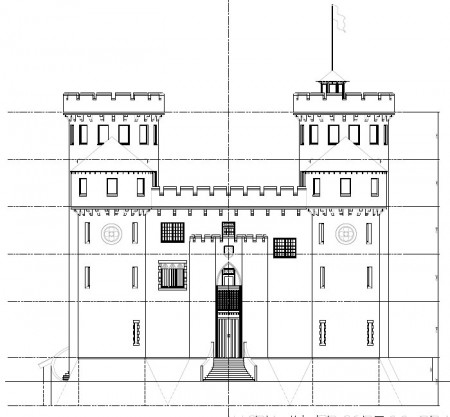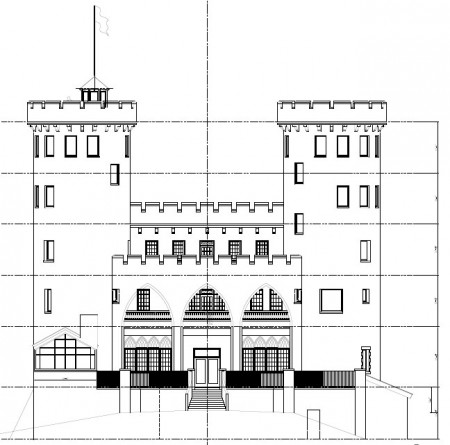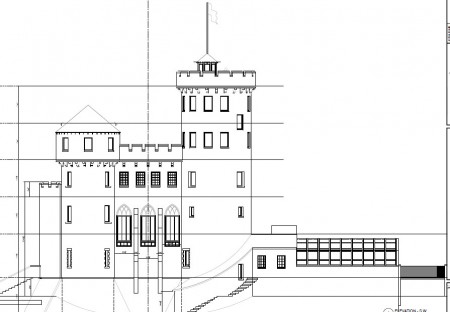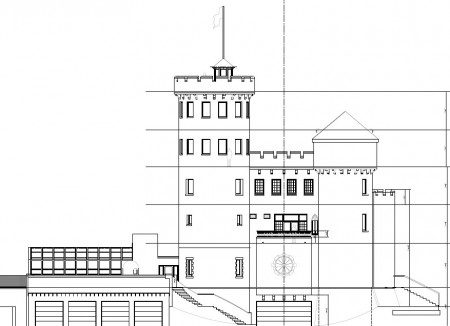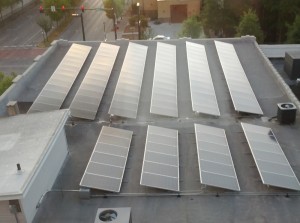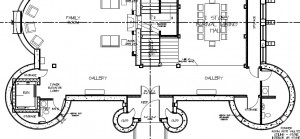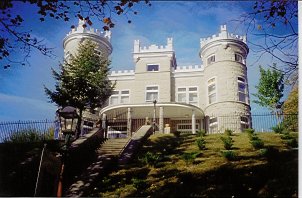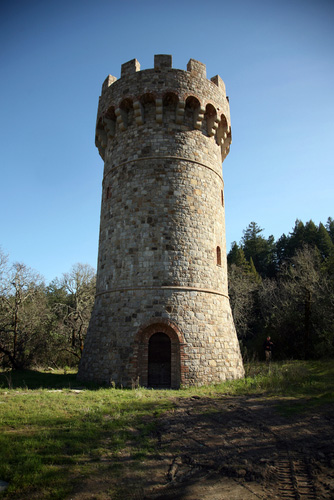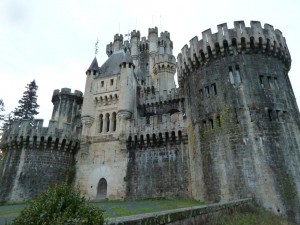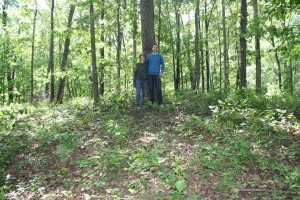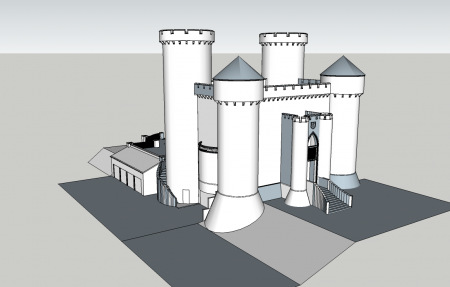After dreaming this place up at least a decade ago, putting it in the “what if” and “maybe someday” category, gradually moving it into the “possibly” category, then the “probably” category, and now hopefully in the “definitely” category. After over a year of finally getting down to the nitty gritty and nailing down the interior structure. We finally, today, received our first looks at the exterior of the castle and I could not be more excited.
First, the 3D renderings, which I am over the moon about.
It looks like an actual authentic castle, I couldn’t be more pleased. It isn’t 100% finalized, but it is at least 99%.
Now the more detailed elevations. First, the front:
There is pretty much done, a few window edits need to be made, and some work with the portcullis in front, but it is pretty much all there. This is the view of the front of the house as you approach. You’ll need to take stairs up to the front door because the 1st floor sits 8 feet above the ground. This allows me to have the lowest windows be 12 feet up, which makes them seem more defensive like a true castle would be. As you increase in elevation the windows get larger.
Now the back patio:
I really like the back, how the archest turned out. Here I had to make some exceptions to usability to allow windows lower to the ground. Surely, a castle built for defense would not have large patio doors and windows on the ground floor of the rear. But we needed them to access the pool area, and they’re in the back, the side most will never see. My view on the structure is one of evolution. Meaning I am not making a time capsule, something to transport you back 1000 years ago. Rather I want it to appear as if the structure, the bones, were built 1000 years ago, but then it was added to, edited, lived in, changed, (aka, it has evolved) since. So maybe the windows were added in the 1700s when threat of invasion had passed. The whole backend could conceptually have been a later edition.
Now the side facing the forest:
I like this side as well. This is where we have those large cathedral style windows, they shine into the great hall. Within the great hall they will be starting 10 feet off the floor, and then go to the ceiling. The ceilings in there are 24 feet tall, so they are 14 foot tall windows. Between the windows are buttresses I wanted added for architectural interest and because they would have been used in the period for this type of gothic architecture. Along the wide tower in back you see a winding staircase. These stairs will be enclosed and will allow access to the basement root cellar from the kitchen (the kitchen being in the 1st floor of that large rear tower. You can also see the side profile of the greenhouse.
Finally, the side facing the road:
The smaller front tower houses the elevator, so I was able to limit windows within it without sacrificing too much interior light, since it is the tower most visible publicly, I think this works to make the structure seem fortified. The mater suite opens onto a small balcony on the radius wall you see that pops out. Inside this radius wall is a rose window, modeled after a traditional rose window. This window is 6 feet across and will be finished with stained glass, it will look amazing on the interior and will shine into a large family room. During the holidays I imagine we’ll put our Christmas tree beneath it, and should we ever have to host an indoor wedding, I imagine the altar would go beneath it.
We have a total of 6 “car garages.” We have a two car garage in the main structure under the aforementioned rose window. This part I’m not quite happy with yet, the transition to the garage door and the trim around it needs to change. We also have space for 4 more cars in garages underneath the pool deck. You then see an exposed exterior staircase, that will be stone, curving from the pool deck down.




